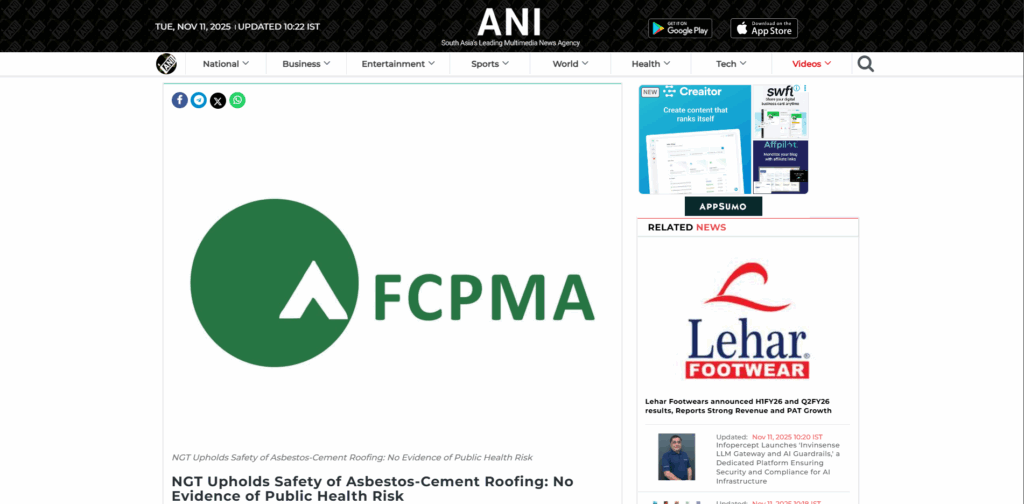CIC ASIA
Chrysotile Asia is committed to providing comprehensive information on the responsible use of chrysotile..
news
NGT Confirms Safety of Asbestos-Cement Roofing
India’s National Green Tribunal has reaffirmed that asbestos-cement roofing poses no proven public-health risk when used and manufactured properly. The ruling reinforces confidence in the
DID YOU KNOW
Scientific studies conducted in Thailand indicate that the historical use of asbestos cement based on chrysotile fiber has been proven not to pose any health risks to the environment or human health.
(Reference: Dr. Gardner, Ohlson, H.F. Thomas, WHO, Health & Safety Executive, U.K.).
WHAT IS CHRYSOTILE?
Chrysotile is a type of asbestos and belongs to the asbestos mineral group. Asbestos is a general term given to a group of naturally occurring silicate minerals that can be separated into flexible fibers.
There are two main mineralogical classifications of asbestos—serpentine and amphibole—based on the type of rock that forms the asbestos. These classifications are further divided into serpentine asbestos (chrysotile) and amphibole asbestos (amosite, crocidolite, fibrous tremolite, fibrous anthophyllite, and fibrous actinolite).
The use of chrysotile dates back more than 2,000 years for various daily applications, such as materials for cremation cloths (used in the cremation process), oil lamp wicks, and more. Russia, Italy, and Canada were among the first three countries in recorded history to commence large-scale commercial mining of chrysotile mineral extracts in the early 19th century
.

